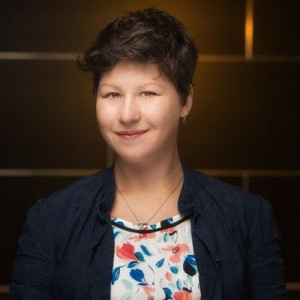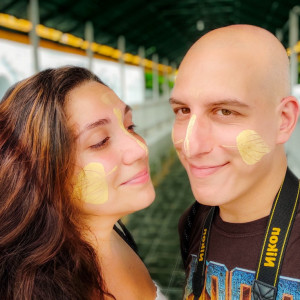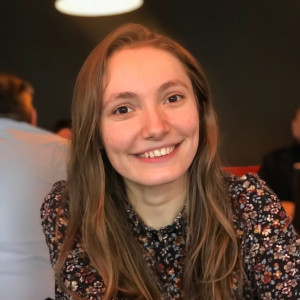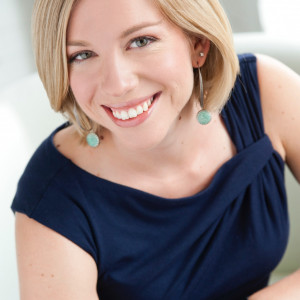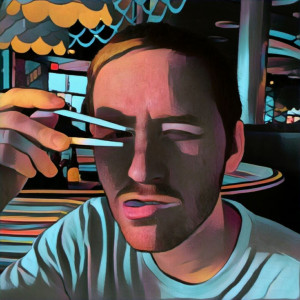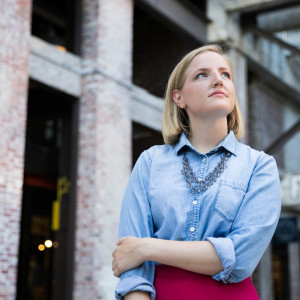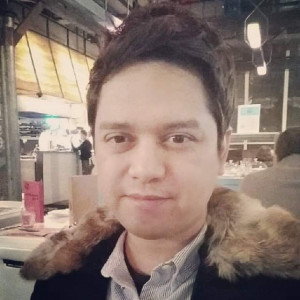What's your typical work routine?
Interview with Lily, an entrepreneur building VR conferencing for remote teams
My typical work routine isn’t too exciting. The first thing I like to do in the morning is take my dog for a walk around the block. While making coffee, I boot up my computer and get to work!
Experts say you should start the day with your most difficult task but I tend to check email and Slack first. Meetings are normally in the afternoon, which I’ll get up from my desk and hop in VR for. Throw a couple more dog walks and a trip to the gym around lunch time and that’s my work day.
Lily has almost a decade of remote work experience, now she's building the team collaboration tool of the future with Virtual Reality
Read full interview from Interview with Lily, an entrepreneur building VR conferencing for remote teams.
Interview with Dani and Luca, digital nomads who have mastered work and travel
We start to work when it's about 9:00 am in Italy, and we work for about eight to ten hours a day, that means that this year we usually worked from the early afternoon till about midnight as we were in Asia almost all the time.
It's always been hard for us to get up in the morning so this time zone difference helped us to be way more productive!
Dani and Luca have mastered the art of traveling while working—see their hacks & tips for thriving as digital nomads.
Read full interview from Interview with Dani and Luca, digital nomads who have mastered work and travel.
Interview with Alexandra Cote, a remote digital marketer and freelancer
Email. Slack. Lots of article writing which I prefer to do in the morning when I just have too many ideas and need to get them all on paper ASAP.
I'm not a big fan of digital tools because they just take so much of my time. So I stick to the basic Google Docs, email, SEO stuff, and Canva [for images].
Besides my regular day, it really depends on what I work on. For articles, I just research and write until I can't write anymore. 😅 But that's good because it means I have a full grasp of the subject, so the ideas just keep flowing.
For my YouTube videos, I tend to get straight to filming. I mainly review design tools and techniques, so I don't really need a script since I've used most of them before regularly, so I'm already familiar with them.
Course creation takes up most of my time. This includes creating scripts, presentations, video editing, audio tweaks, all those fun parts that need to be covered in order for me to provide the best possible insights to my students.
I don't have a work routine. Instead, I have a life routine.
I know when I need my breaks, I know I need to take time to cook something delicious, work out, go for a walk, or just talk to people.
To mix work and life a bit, I've made a habit out of talking to people. So my LinkedIn networking game has never been stronger.
As a rule, I connect with 10-20/people a day on social media or just via email.
Of course, not everyone has time for a chat, but those who do always have meaningful things to talk about.
Feel free to connect with me. I love questions!
Alexandra juggles freelancing, a full-time remote job, YouTube, and Skillshare instructing. How does she manage it all? Find out in her interview.
Read full interview from Interview with Alexandra Cote, a remote digital marketer and freelancer.
Interview with Kristi, a CEO and remote team leader
There is no routine, other than coffee in the morning and time with my baby girl at various intervals (dictated by her to a certain degree).
Well, I should say that I try to do more project work that requires concentration in the AM and then have meetings and do the fun admin work (this is a boss's life!) in the afternoons.
Kristi is a CEO, remote work author, and speaker. In this interview, she shares the impact of new motherhood and remote team leadership on her work.
Read full interview from Interview with Kristi, a CEO and remote team leader.
Interview with Ayush, a CEO and avid remote team builder
We have teams all around the globe. So, I start by clearing off my inbox and then taking up some strategy meetings.
First, I work in areas where there may be a roadblock. It usually takes half of the day. The other half goes to my tasks involving new client engagements, revenues, etc.
Ayush is a CEO that is committed to helping companies build successful remote teams—see his process and tips for developing location independent teams that thrive.
Read full interview from Interview with Ayush, a CEO and avid remote team builder.
Interview with Gregory, a Senior Software Developer
My current company is based on the West Coast, but I live on the East Coast. There is a 3-hour time difference between us, so I generally have about 3-4 hours of uninterrupted time before the rest of the company really comes online every morning.
So, my days tend to get split up into a few different parts.
First, I start by reviewing PRs or code checked in from the day before. This helps me get up to speed with what is different or what is being worked on, and lets me kind of get back in the programming mindset.
Pretty soon after that, I start the main "programming" part of the day, where I generally have a single focus, one problem, or one part of the code that I need to work on.
Because of the time difference, both of these parts almost always fall during the time when I don't need to worry about interruptions from the rest of my team.
I'm free to really focus on the problem in front of me. Sometimes I'll purposely take myself offline, if I really need to avoid distractions.
The next chunk is normally the "meetings" part of my day, where I spend time talking with coworkers, having meetings, discussing problems and solutions, talking about timelines, and overall just communicating with others at the company.
The last part of my day is normally spent finishing up work from the morning and writing documentation, tests, small scripts, or fixing more trivial bugs.
This also doubles as my "wind down" from the day, so I pick easier or less "intense" things to work on, and try to pick things that can be easily interrupted and restarted.
I will also often set up the problem or task I'll be working on the next day, so that after I'm done doing PR review, I can jump right into it.
Gregory is a senior software developer working from home - learn how he finds the balance between lack of focus and hyperfocus.
Read full interview from Interview with Gregory, a Senior Software Developer.
Interview with Liz, a UI/UX designer and cowork advocate
Lately, I’ve been traveling all over the world and crossing several time zones (another benefit of working remote – travel flexibility!).
It’s important to have an established work routine when everything else is constantly changing.
I typically work from a cafe for a few hours out of the day and then take any calls or meetings I have back at my accommodation where I know the internet will be stable and it will be quiet enough.
Liz is a traveling UI/UX designer—see her strategy for thriving as a digital nomad and her efforts to promote coworking.
Read full interview from Interview with Liz, a UI/UX designer and cowork advocate.
Interview with Digital Nomad Sage, an entrepreneur and UX consultant
My typical work routine is not typical. When I have big UX projects, I’ll work as long as it takes to reach my deadlines. There are many times when I’ll work longer than eight hours a day.
When I don’t have big UX projects, I’m usually watching Youtube videos and studying courses on Udemy to improve my skill sets. I’ll set aside about two hours a day for these and then use at least six hours to work on projects like Digital Nomad Sage.
I’m still striving to achieve the 4-hour workweek, but that won’t be possible until my project matures and I make enough discretionary income to outsource. I’m really hands-on and pretty much just trust myself to do things properly but that will change in the future.
From e-books to blogging, Digital Nomad Sage has become an expert on making money online—see his advice for developing an online business.
Read full interview from Interview with Digital Nomad Sage, an entrepreneur and UX consultant.
Interview with Betsy, a head of content and remote work routine expert
I am a very structured person when it comes to my routine. When I first started working remotely, I didn't have much of a method and I often felt flustered.
I've come to realize that I really thrive with structure and a daily routine.
I typically start working at 6 am and usually do some editing work from 6-7 am. After that, I usually teach a few classes from 7-10 am or so.
Next, I work on a content related project for an hour or two and then break for lunch. Lunch is usually an hour, and I try to take a short walk for some exercise and to get out of the house.
In the afternoon, I make a second cup of coffee, and I continue with my content work (podcast editing, writing blog posts, articles, or newsletters). I usually reserve the late afternoon for less strenuous work like meetings, calls, email, and so forth.
To stay on schedule, I use a paper planner, and I schedule out each hour of my day the day before. That way, when I sit down at 6 am, I know exactly what to work on. I also try to keep my phone on airplane mode for 80 percent of the day, and I only check email 1-2 times a day, which has allowed me to be so much more productive!
Betsy Ramser is a content manager, blogger, and teacher who helps other remote workers thrive while creating a daily routine that works.
Read full interview from Interview with Betsy, a head of content and remote work routine expert.
Interview with Gino, a founder skilled in building remote teams
I typically wake up around 7:00 am. I try to grab breakfast, but the truth is most days I’m going straight from bed to the computer. It’s one of those habits that’s just so hard to break.
So, on average, I’ll probably start work by 7:30 am or earlier. I work until about 10 am, at which time I take a short break. By 1 pm or 2 pm, I’m taking a longer break—usually 2 hours—to have lunch and go to the gym.
I’ll get back around 3 pm or 4 pm and continue working until about 8 pm.
Gino realized how important remote work could be to finding the best talent—see his strategies for building remote teams.
Read full interview from Interview with Gino, a founder skilled in building remote teams.
